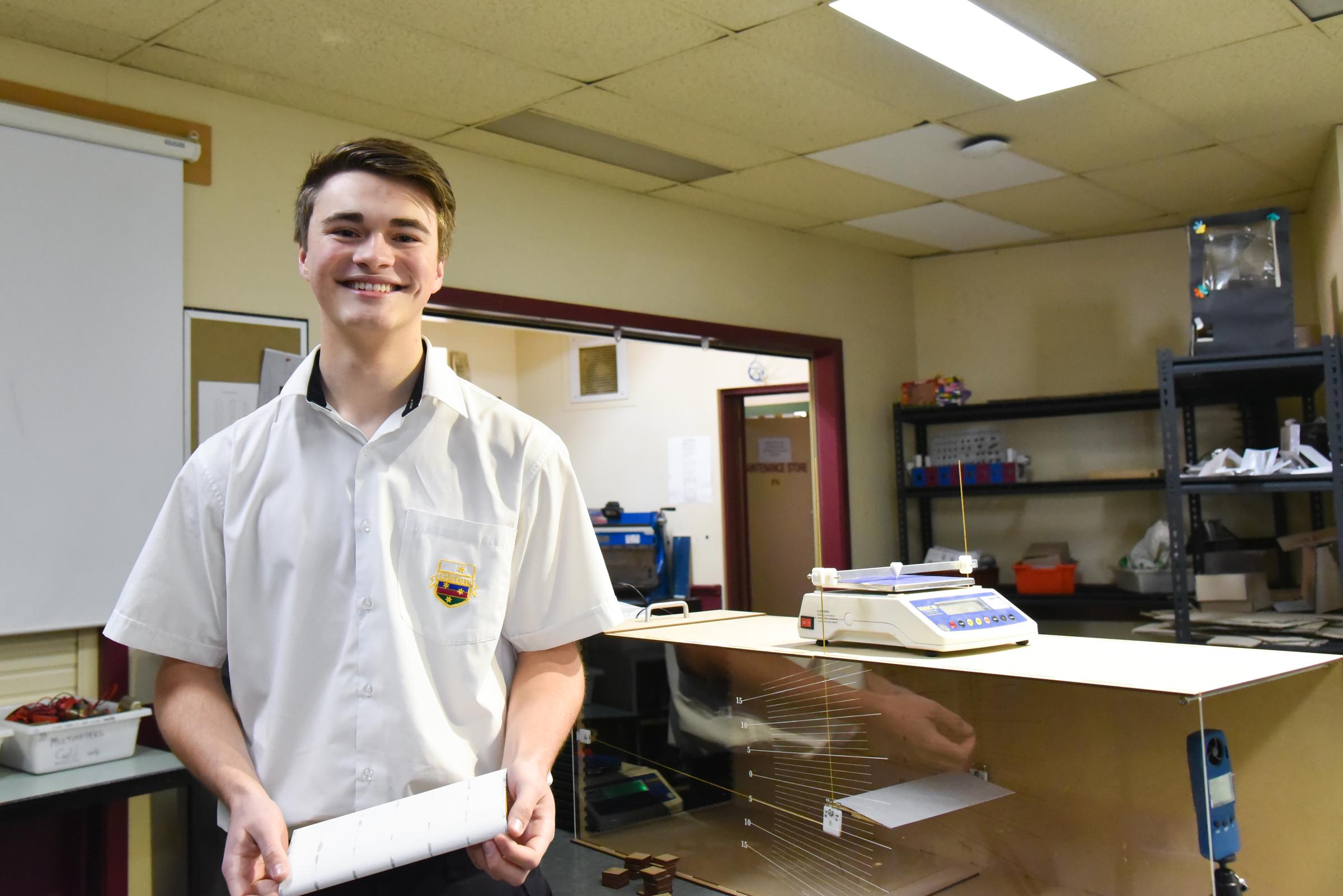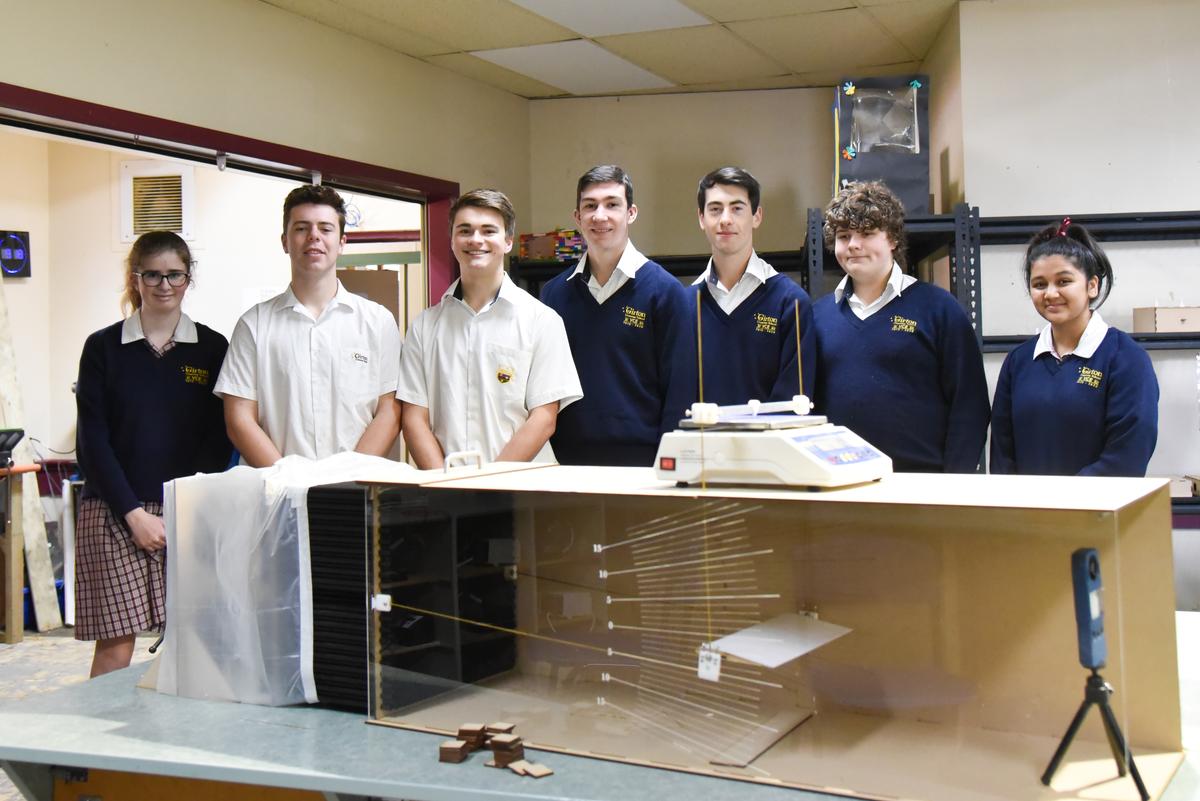Physics Students Take Flight

Students in Mr Landvogt and Mr Smith’s Physics classes have been studying heavier-than-air flight and conducting Extended Practical Investigations as a part of their Unit Two coursework.
Students have been asked to answer questions such as how the shape of an aerofoil influences lift, how icing on a wing surface affects a wings performance and how the shape of wind turbine blades contribute to the amount of electrical energy generated.
Students have been able to utilise the fantastic equipment in the Technology Department in order to bring their designs to life. The school’s laser cutter and 3D printers were used to create scaled-down representations of real-world concepts that allow heavy things to fly.
Mr Martin, the Technology Department’s Laboratory Technician, designed and built a wind tunnel to assist students in conducting their experiments. Consisting of four high speed D.C. fans and over 1300 plastic tubes to “smooth out” the airflow, students can simulate the flight of their designs and take measurements such as lift, drag, air speed and air temperature. “Having resources such as these are a fantastic resource that allow students to conduct experiments that would have otherwise been only simulated in the past.” Mr Smith said.


